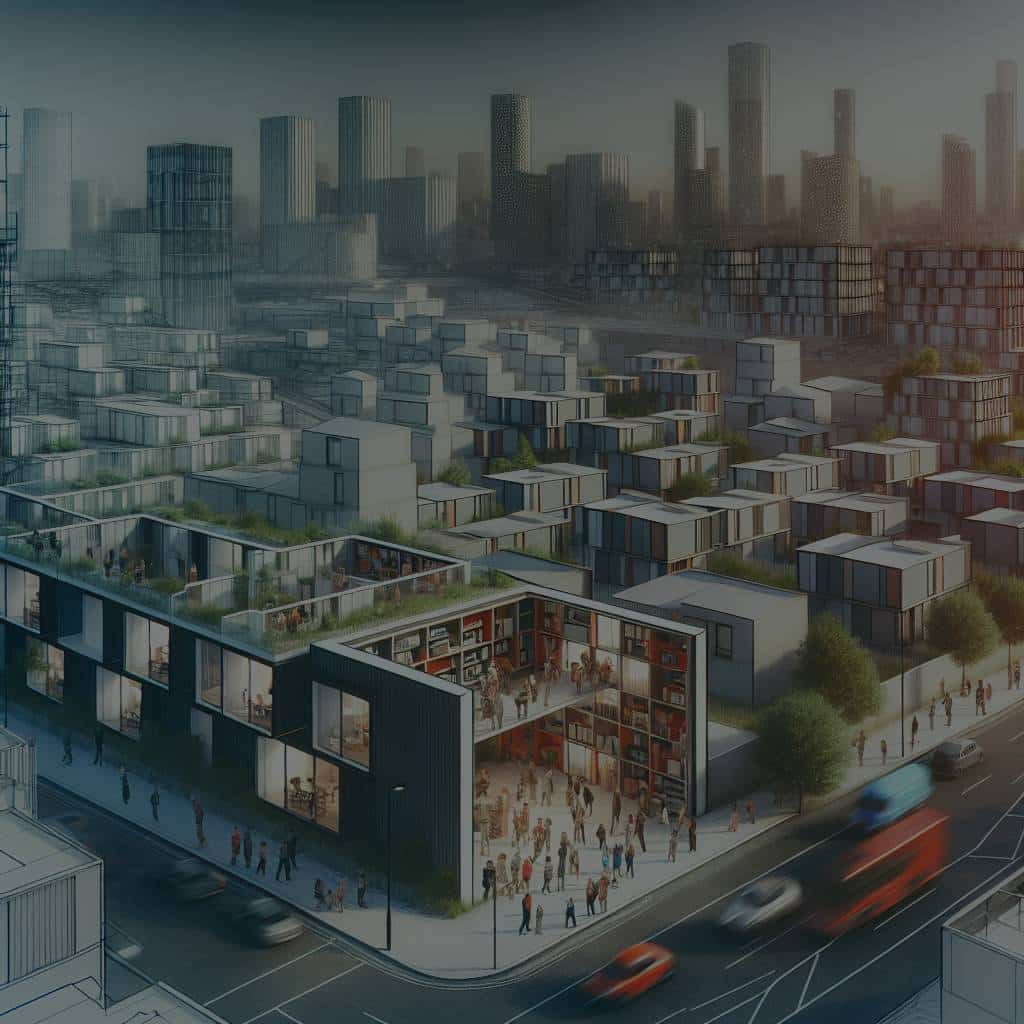What Is the Potential of Micro-Units for Solving Urban Housing Shortages in the UK?

The housing crisis in the UK is a pressing issue that demands novel solutions. Micro-units are increasingly being touted as a potential answer to this problem. By understanding and leveraging the potential of micro-units, we may be able to make a substantial difference in housing availability, affordability, and sustainability. So, let’s delve deeper into this topic.
Recognising the Housing Crisis and the Concept of Micro-Units
The UK has been grappling with a housing shortage for years. Despite the government’s consistent efforts to increase the number of homes, the goal of meeting the growing demand remains elusive. High prices, especially in cities like London, make it harder for average-income individuals to own or rent properties.
Lire également : What Are the Impacts of High-Speed Rail Developments on Real Estate Values in Adjacent Areas?
In the face of these challenges, the concept of micro-units is gathering momentum. Micro-units or micro-homes are small, compact living spaces designed to make the most of a limited area. These units are often less than 37 square meters and come with kitchen, sleeping, and bathroom facilities. They offer a potentially viable solution for the housing shortage, providing more affordable options for individuals and reducing pressure on the housing market.
The Role of Planning Policy in Promoting Micro-Units
The planning policy plays a critical role in enabling the development and proliferation of micro-units. Current policies need to be tweaked and reoriented to accommodate this innovative housing scheme. The inclusion of micro-homes in local development plans, for instance, can help foster their growth.
Avez-vous vu cela : What Are the Best Practices for Sustainable Waste Management in Large Real Estate Complexes?
Easing restrictions imposed by the green belt policy can also free up more land for building micro-units. However, it’s crucial to ensure that this doesn’t compromise the ecological balance. Close collaboration between government bodies, housing sector stakeholders, and environmental organizations is key to crafting a policy that reconciles housing needs with environmental considerations.
Micro-Units and Affordable Housing
Micro-units offer a cost-effective solution to the housing problem by providing affordable options for buyers and renters. They are typically cheaper to build, purchase, and maintain compared to conventional houses. This makes them a potentially attractive option for first-time buyers, low-income individuals, and the growing population of single-person households.
Moreover, micro-homes can be strategically located in urban areas, bringing residents closer to amenities and job opportunities. This not only reduces commuting times and costs but also contributes to a more sustainable urban ecosystem.
Harnessing Micro-Units for Green Building
Building micro-units is not just about solving the housing problem, but also about doing so in a sustainable way. Micro-units, with their smaller footprints, use fewer resources in construction and fewer utilities in operation, making them inherently green.
Furthermore, integrating green building technologies such as renewable energy systems or energy-efficient appliances can enhance their sustainability. This aligns well with the government’s commitment to reducing carbon emissions and promoting the green economy.
The Challenges and Solutions in Implementing the Micro-Units Scheme
While micro-units hold promise, implementing them on a large scale comes with its challenges. The perception of micro-units as substandard housing needs to be addressed. It’s essential to ensure that despite their size, these homes offer a comfortable and quality living space.
Regulations also need to be revised, as current building and zoning codes often don’t accommodate such small units. A part of this solution lies in advocating for policy changes that support micro-unit development.
Another challenge is the financing of micro-unit projects. Traditional lenders may be hesitant to finance such unconventional schemes. However, with the right regulatory framework and public-private sector partnerships, these challenges can be overcome.
Micro-units, with their potential to offer affordable and sustainable housing solutions, could well be a game-changer in the UK’s urban landscape. Implementing them will undeniably require a collaborative effort from the government, the housing sector, and local communities. But, if done right, micro-units could be a significant step towards solving the urban housing shortage in the UK. They represent an exciting opportunity to rethink our approach to housing, making it more inclusive, affordable, and sustainable.
The Impact of Micro-Units on the Real Estate Market
The integration of micro-units into the real estate market has the potential to revolutionise the sector. With their smaller size, micro-units could dramatically increase the number of available homes per year and influence house prices. The creation of these units could also transform the current layout of urban areas and housing associations, and offer novel opportunities for social housing.
With the size of micro-units typically being under 37 square meters, developers can potentially build more homes in the same space compared to conventional housing. This could help ease the strain on the housing market and make a significant contribution towards meeting housing demand. As the number of available homes increases, house prices may stabilise or even decrease, making home ownership more attainable for average-income individuals and young people.
However, this doesn’t mean that existing housing stock should be completely replaced with micro-units. Micro-units should be considered as a supplementary solution, providing additional affordable homes in the mix of housing options.
The prospect of living in a smaller space may be daunting for some, but with clever design and planning, micro-units can offer a comfortable, practical and desirable living solution. Their strategic placement in urban areas also places residents in close proximity to amenities and workplaces, promoting a lifestyle with a reduced need for long commutes and potentially lower carbon emissions.
The Role of Local Authorities in Promoting Micro-Units
The involvement of local authorities is crucial in the promotion and successful integration of micro-units into the housing market. Authorities must create a supportive planning system that recognises the potential of micro-units and ensures that their development aligns with local housing needs and environmental considerations.
For example, easing restrictions imposed by the green belt policy could free up more land for micro housing. However, it’s crucial to strike a balance and ensure that the development of micro-units does not come at the expense of environmental conservation.
Local authorities should also work closely with housing associations to ensure the affordability of micro-units. This could involve creating schemes similar to ‘help to buy’, specifically tailored to micro-units, to assist first time buyers and low-income individuals.
Working in tandem with the housing sector, local authorities have the potential to facilitate the integration of micro-units into the real estate market, transforming them from a novel concept into a viable solution for the housing crisis.
Conclusion: Towards a Future of Micro-Units
The potential of micro-units for solving the urban housing shortage in the UK is immense. They offer an innovative solution to the housing crisis, offering affordable homes and contributing to a more sustainable urban landscape. However, the success of this scheme depends largely on the combined efforts of the government, real estate sector, housing associations and local authorities.
While challenges such as public perception, regulatory revisions and project financing need to be addressed, these issues are not insurmountable. With the right planning system and a collaborative approach, the micro-unit scheme could change the face of urban housing in the UK.
In essence, micro-units represent more than just a potential solution to the housing crisis. They signify a fundamental shift in our approach to housing, where less can indeed be more. Their development and integration could pave the way for a more inclusive, affordable and sustainable housing market. Micro-units might just be the key to ensuring housing for all, while simultaneously working towards a greener and more sustainable future.
